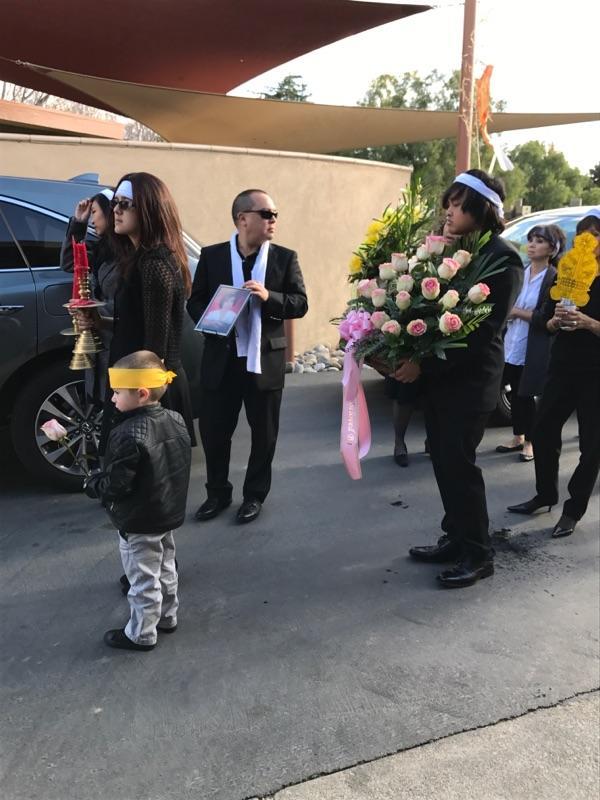Ribbons of Remembrance
“My grandma died [on] the day of my brother’s wedding…I was the one that had to break the news to my mom,” English teacher Tuyette Van-Sansone said.
If you’ve seen Sansone since Thanksgiving, you may have noticed the white headband she’s worn every day. Sansone has been wearing the ribbon across her forehead as a tribute to her deceased grandma. As a part of her Vietnamese culture, white represents sorrow and loss. Immediate family members of the deceased symbolically wear a white headband for a significant period of time. “I’m wearing this for 100 days. Traditionally, it’s supposed to be worn for a year for women,” she said. “It is a sign of respect and an observation of mourning, so if you follow the culture, this is a sign that you’re mourning somebody that has recently passed away,” she said.
During the funeral, Buddhist monks waved incense across the bands and handed them out to family members before everyone related to the deceased walked around in a procession. “We went around the casket while the monk is saying his prayers, and is sending the soul back up to the afterlife,” Sansone said. Sansone and her family were then arranged into an order by the monk and began to leave the funeral. At the crematorium, the body of the deceased was put into the incinerator, and the white headband ceremony began. “At that time, if you’re not directly related to the deceased, you are supposed to take off your white band and throw it with the casket, Sansone said. However, everyone in her family threw in their headbands as well. “[It was] such a tense, almost flurry of activity because all of the white bands were collected and thrown in.” The significance of throwing the white headband with the body is symbolic. “It’s supposed to go up with the person as an offering. We all got a new one after the ceremony to wear,” she said.
Many people have noticed Sansone’s headband, but she said the majority of students haven’t asked her any questions. After learning about the headband’s significance, students were curious to learn about the culture. Freshman Jade Vak said, “I look at her differently now because at first I thought it was a fashion statement, but now it gives me insight into who she really is.”
Although the observation is lengthy for Sansone, she believes it is all well worth it. “I just think that because it was my grandma, and she’s kind of the matriarch of the family. This is the way she had planned her funeral, and this is the thing they do in the culture. I’m doing this to honor and respect her wishes.”


Yanira Rodriguez • Feb 5, 2017 at 11:34 PM
I love that you guys did a story about this because a lot of cultures remember people in different ways and it is always good to have a little more knowledge. I think this is an interesting way to honor someone and it means a lot to remember them in any way you can.
Kaylyn • Feb 3, 2017 at 11:21 AM
This is really beautiful, and a very nice way for her to honor her grandmother.
Krystal Mullennix • Feb 3, 2017 at 10:55 AM
This is very well written, and gives us knowledge on something many of us do not understand.